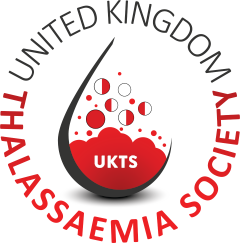Thalassaemia trait/ minor

Information
Anyone can be a carrier of thalassaemia, but it is most prevalent in individuals who can trace their ancestry to;
- South America,
- the Caribbean,
- the Mediterranean,
- the Middle East,
- Africa
- Asia and the Pacific Isles
Thalassaemia is common in these regions because it was believed to be a revolutionary response to malaria- for more information look here: How is it diagnosed
If you’re a carrier of thalassaemia, it means you carry one of the faulty genes that cause thalassaemia, but you do not have the condition yourself.
Being a carrier of the trait is sometimes known as having the thalassaemia trait or having thalassaemia minor.
If you carry the gene for thalassaemia, you will never develop the full-blown condition, but you may sometimes experience mild anaemia because your red blood cells are smaller than usual. It is inherited from parents like hair, eye or skin colour. It is passed on equally by men and women. Thalassaemia is not contagious or means that you have bad blood as the myths say.
Beta thalassaemia carriers are usually healthy and do not know that they are carriers until they have a special blood test carried out. This blood test can be done by your GP and the result should be known within two weeks.
The difference between a carrier and a non-carrier is that the red cells of the carrier are slightly smaller than those of the non-carrier. This is sometimes mistaken for iron deficiency anaemia and iron is wrongly prescribed. Thalassaemia carriers should not take iron unless they need it. Before iron is prescribed, iron levels in the blood must be measured to ensure there is a need.
This type of anaemia is different from iron deficiency anaemia and does not need any treatment. You can find out if you’re a carrier of thalassaemia by having a blood test called haemoglobin electrophoresis that looks for abnormal types of haemoglobin the blood. The NHS Sickle Cell and Thalassaemia Screening Programme also has detailed leaflets about being a beta thalassaemia carrier and delta beta thalassaemia carrier. There are three forms of thalassaemia: alpha thalassaemia, beta thalassaemia and delta beta thalassaemia.
Alpha thalassemia Carrier /minor
Alpha thalassemia occurs when some or all of the 4 genes that make haemoglobin (the alpha-globin genes) are missing or damaged.
There are 4 types of alpha thalassemia:
- Alpha thalassemia silent carrier. One gene is missing or damaged, and the other 3 are normal. Blood tests are usually normal. Your red blood cells may be smaller than normal. Being a silent carrier means you don’t have signs of the disease, but you can pass the damaged gene on to your child. This is confirmed by DNA tests.
- Alpha thalassemia carrier. Two genes are missing. You may have mild anaemia
Beta thalassaemia Carrier/minor
Carriers of beta thalassaemia are normally healthy and will not know that they are carriers unless they have a special blood test to detect this condition. Although being a beta thalassaemia carrier does not cause any symptoms it’s important for them and for their doctors to know if they have this condition for various reasons.
Before a person who is a carrier of beta thalassaemia decides to have children it’s advisable for them to find out as soon as possible if their partner is also a carrier of beta thalassaemia or another interacting haemoglobin such as sickle haemoglobin (Hb S), Hb O Arab or Hb Lepore. This only requires a simple blood test. This test is advisable because, if positive, there will be a 1 in 4 chance (25%) that any child they have will inherit beta thalassaemia from both parents. If a child inherits beta thalassaemia from both parents it will have Beta Thalassaemia Major and is usually associated with considerable medical problems.
